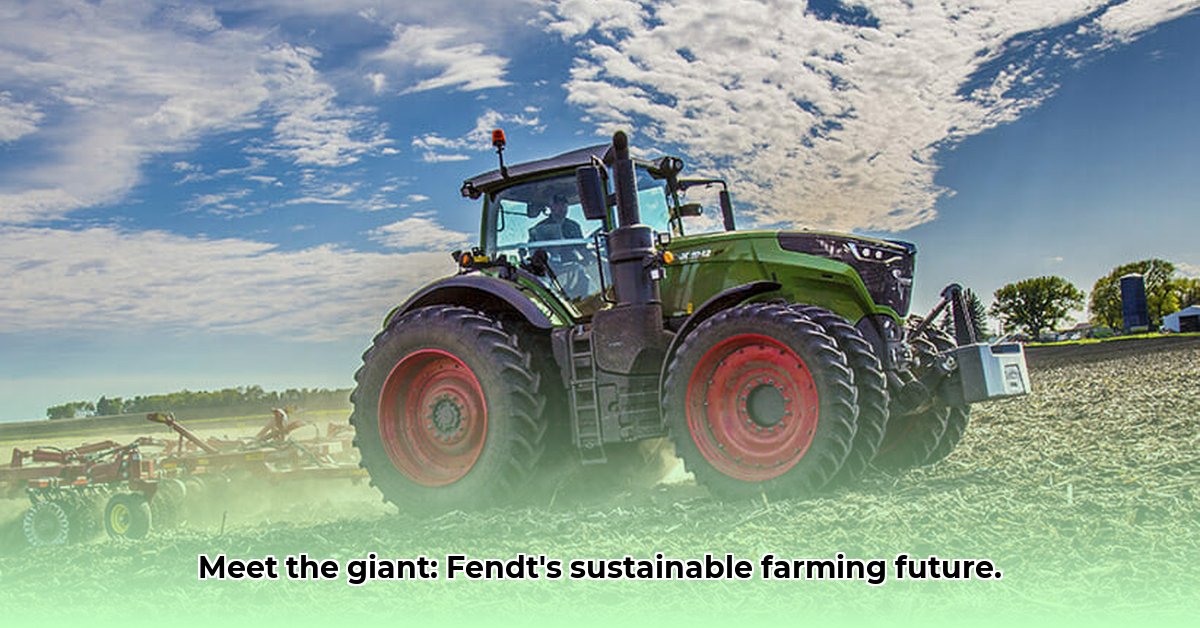
The Fendt 1100 Vario MT, one of the largest tractors ever produced by Fendt, represents a significant advancement in large-scale farming. Its potential to enhance agricultural efficiency while minimizing environmental impact warrants a thorough examination. This analysis will delve into its technical specifications, sustainability implications, market position, and actionable recommendations for various stakeholders. For comparison, see the size of other large tractors like those here.
Technical Specifications & Features
The Fendt 1100 Vario MT boasts a remarkable horsepower range of 511–673 hp, powered by robust MAN engines. This raw power is harnessed through Fendt's innovative iD technology, which optimizes engine speed for reduced fuel consumption and emissions. Its tracked drive system, unlike wheeled counterparts, minimizes soil compaction, a critical factor in sustainable agriculture. The tractor's versatility is further amplified by its hydraulically-controlled hitch, allowing for precise implement adjustments and efficient task management. Its advanced features like VarioGuide (GPS-guided steering), SectionControl (automatic section switching), and VariableRateControl (variable rate application) are integral to optimizing resource usage.
Sustainability Analysis
The 1100 Vario MT's potential for sustainable farming hinges primarily on its fuel efficiency and reduced soil compaction. The Fendt iD technology significantly lowers fuel consumption compared to traditional high-speed engine designs. This translates directly to reduced greenhouse gas emissions and lower operating costs for farmers. Furthermore, the tracked drive system minimizes soil compaction, leading to improved water infiltration, enhanced root growth, and a healthier soil ecosystem.
However, a complete sustainability assessment must consider the tractor’s entire lifecycle. The high initial purchase price represents a significant barrier to entry for smaller farms. Additionally, the manufacturing process and eventual disposal of the machine contribute to its overall environmental footprint, necessitating a thorough life cycle assessment (LCA). Ongoing research from institutions like the USDA and independent researchers is essential to quantify these impacts accurately. It’s a complex calculation, involving many variables. How can we balance the benefits against the cost?
Market Assessment
The Fendt 1100 Vario MT primarily targets large-scale farming operations possessing the financial resources to justify the substantial investment. The tractor's size and capabilities make it unsuitable for smaller farms or operations with diverse, smaller fields. The high purchase price remains a significant barrier to wider adoption, despite potential long-term efficiency gains and cost savings. Financing options and government subsidies could play a vital role in broadening market penetration.
Actionable Recommendations
Different stakeholders must take strategic steps to maximize the 1100 Vario MT’s benefits and mitigate its potential drawbacks.
Actionable Intelligence Table:
| Stakeholder | Short-Term Actions | Long-Term Actions |
|---|---|---|
| Large Farms | Comprehensive ROI analysis; explore financing options; optimize precision agriculture techniques | Conduct farm-specific LCAs; integrate data analytics for operational efficiency; explore alternative fuels |
| Government Agencies | Implement targeted subsidies for sustainable agricultural technology adoption | Develop stringent emissions standards; fund LCA research; incentivize sustainable farming practices |
| Manufacturers | Continuous improvement in fuel efficiency and emission reduction technologies; design for easier recyclability | Invest in sustainable manufacturing processes; explore alternative fuel sources and production methods |
| Research Institutions | Conduct comprehensive LCAs, focusing both on operational efficiency and life cycle impacts | Explore potential carbon sequestration strategies related to soil health and agricultural practices |
Conclusion
The Fendt 1100 Vario MT presents a compelling case for enhancing agricultural efficiency and sustainability. While its powerful engine and tracked drive system offer significant advantages in fuel efficiency and soil health, the high purchase price and environmental considerations related to its production and disposal necessitate a nuanced perspective. A holistic approach involving collaboration among farmers, government agencies, manufacturers, and research institutions is crucial for maximizing its benefits and mitigating its potential drawbacks within a sustainably-focused agricultural landscape. The future of this technology hinges on continued innovation in both engineering and responsible agricultural management.